News
-
 Neuroscience
NeuroscienceMom’s voice holds a special place in kids’ brains. That changes for teens
Unfamiliar voices hold special appeal for teens, a sign of a shift from a focus on mostly family to wider networks, brain scans suggest.
-
 Health & Medicine
Health & MedicineJoggers naturally pace themselves to conserve energy even on short runs
Data from fitness trackers and treadmill tests challenge ideas about what drives speed.
By Chris Gorski -
 Plants
PlantsLeonardo da Vinci’s rule for how trees branch was close, but wrong
An update to da Vinci’s elegant, 500-year-old “rule of trees” offers a powerful, new way to describe the structure of almost any leafy tree.
-
 Health & Medicine
Health & MedicineAntibiotics diminish babies’ immune response to key vaccines
With each round of antibiotics during a child’s first two years, antibody levels to four vaccines dropped further from what’s considered protective.
-
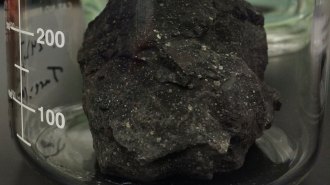 Space
SpaceAll of the bases in DNA and RNA have now been found in meteorites
Scientists have detected adenine and guanine in meteorites for decades and seen hints of uracil. But cytosine and thymine had remained elusive.
By Liz Kruesi -
 Tech
TechThis camera lens can focus up close and far away at the same time
Inspired by the eye of an extinct trilobite species, the large depth of field can help with imaging techniques to create 3-D photos.
By Anna Gibbs -
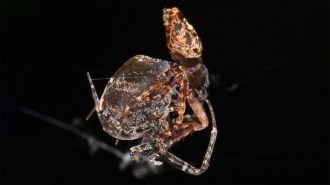 Animals
AnimalsThese male spiders catapult away to avoid being cannibalized after sex
In a leap for survival, male Philoponella prominens spiders leverage hydraulic pressure to extend leg joints and fling themselves off hungry females.
-
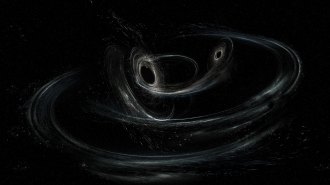 Physics
PhysicsGravitational waves gave a new black hole a high-speed ‘kick’
Ripples in spacetime revealed that two black holes united into one, which then sped off at around 5 million kilometers per hour.
-
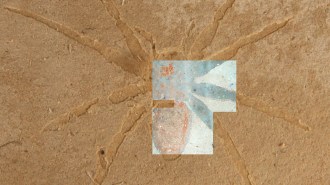 Paleontology
PaleontologyGlowing spider fossils may exist thanks to tiny algae’s goo
Analyzing 22-million-year-old spider fossils from France revealed that they were covered in a tarry black substance that fluoresces.
-
 Particle Physics
Particle PhysicsThe Large Hadron Collider has restarted with upgraded proton-smashing potential
Physicists will start taking data this summer once the revamped Large Hadron Collider gets up to full speed.
-
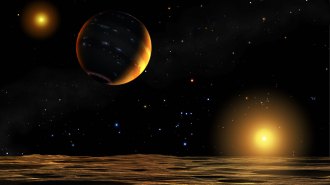 Astronomy
Astronomy‘Goldilocks’ stars may pose challenges for any nearby habitable planets
Orange dwarfs emit far-ultraviolet light long after birth, stressing the atmospheres of potentially life-bearing worlds.
By Ken Croswell -
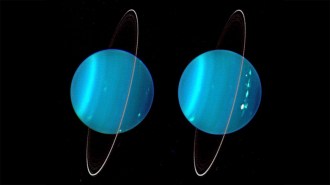 Planetary Science
Planetary ScienceU.S. planetary scientists want to explore Uranus and Enceladus next
A report on recommendations for the next 10 years of U.S. planetary science prioritizes sending an orbiter to Uranus and an “orbilander” to Enceladus.
By Liz Kruesi